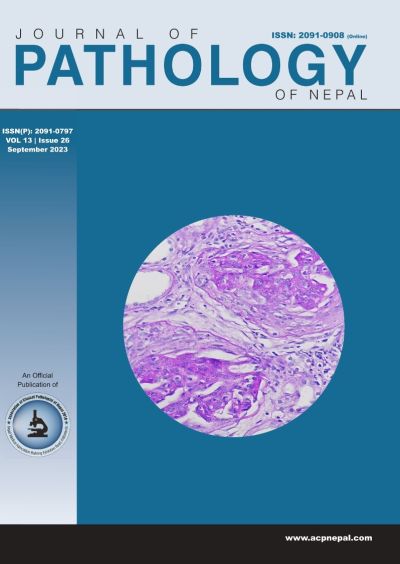Agreement of results between dry and wet chemistry system for common clinical chemistry parameters
DOI:
https://doi.org/10.3126/jpn.v13i2.55219Keywords:
Dry chemistry, Wet chemistry, Biochemical parameters, AggregementAbstract
Background: The advancement of analytical chemistry has led to the use of automated systems in clinical laboratories, including liquid-based wet chemistry and film-based dry chemistry systems. Reflectance spectrophotometry-based dry chemistry systems offer a viable alternative to wet chemistry analyzers. This study aimed to compare the agreement of results between the dry chemistry system and the wet chemistry system.
Materials and Methods: Secondary data from external quality control samples were analyzed using the Vitros 350 and BA-400 analyzers, over a period of one year (from 1st August 2021 to 31st July 2022). A total of 57 samples and 12 biochemical parameters were considered. Statistical analysis, including paired t-tests, Spearman's correlation, Bland-Altman plots, and the Intraclass Correlation Coefficient were applied. p value <0.05 was considered to be statistically significant.
Results: The bland-Altman analysis demonstrated that the measurements from both methods fell within the 95% limits of agreement for most of the clinical chemistry parameters like glucose, urea, creatinine, and liver enzymes indicating overall agreement. ICC values indicated excellent reliability for 10 out of 12 parameters, with HDL-C showing moderate reliability and albumin demonstrating good reliability respectively.
Conclusions: The findings of the present study suggest a high level of agreement and correlation between the dry and wet chemistry systems for common biochemical parameters. However, it is important to consider the specific parameters and limitations of each system. These results have implications for laboratories and healthcare professionals in selecting the most suitable system for their needs and resources.
Downloads
Downloads
Published
How to Cite
Issue
Section
License
Copyright (c) 2023 The Author(s)

This work is licensed under a Creative Commons Attribution 4.0 International License.
This license enables reusers to distribute, remix, adapt, and build upon the material in any medium or format, so long as attribution is given to the creator. The license allows for commercial use.




